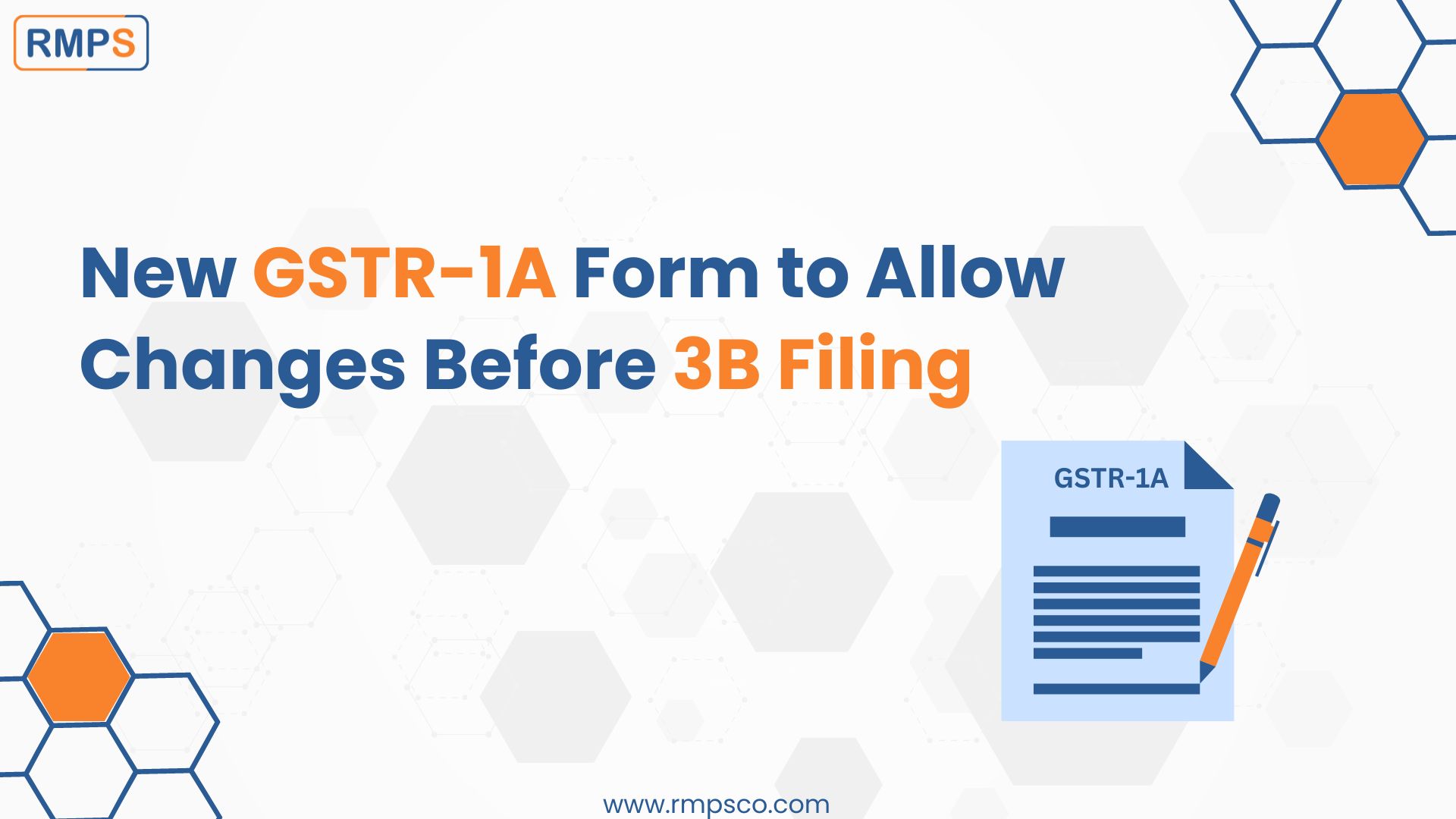
Introduction
The Goods and Services Tax (GST) Council has introduced a new form, GSTR-1A, aimed at simplifying the tax filing process for businesses. This optional form allows taxpayers to make corrections to their GSTR-1 before submitting the GSTR-3B, ensuring accurate tax liability.
Key Features of GSTR-1A
1. Amendment Capability
The GSTR-1A form permits taxpayers to amend their GSTR-1 for a specific tax period. This capability includes adding any missed sales details or correcting mistakes made in the original GSTR-1 filing.
2. Timing
These amendments can be made within the same month or period before filing GSTR-3B. Once taxpayers file GSTR-1, they cannot alter it for that period; therefore, any changes or missed records must be reported in the GSTR-1 of the next return period.
3. Automatic Population
Changes made in GSTR-1A will automatically populate the revised obligations in GSTR-3B, ensuring accurate liability release.
Benefits of GSTR-1A
The introduction of GSTR-1A offers several advantages to businesses. First, it allows businesses to correct any errors or omissions in their sales data, leading to more accurate tax filings. Additionally, it promotes efficient reporting by allowing revisions before the final tax submission. Furthermore, it reduces the chances of discrepancies between sales data reported by the seller and the buyer by ensuring corrections are made before filing GSTR-3B.
Understanding the Distinction
It’s important to note the difference between GSTR-1 and GSTR-1A. GSTR-1 contains all sales particulars filled out by the seller. The data from GSTR-1 is used to populate the buyer’s GSTR-2A. On the other hand, GSTR-1A allows sellers to update their sales details as reflected in the buyer’s GSTR-2A. Any corrections made by the buyer will appear in the seller’s GSTR-1A, updating the GSTR-1 automatically upon acceptance.
Example Scenario
To understand how works, consider the following example:
Amar purchases 100 pencils worth Rs. 500 from Mayank General Store. However, Mayank General Store incorrectly shows it as Rs. 50 sales in his GSTR-1 Form. The data from Mayank’s GSTR-1 appears in Amar’s GSTR-2A. Amar corrects it to Rs. 500. Consequently, this change reflects in Mayank’s GSTR-1A, updating his GSTR-1 automatically upon receiving the correction.
Conclusion
The introduction of GSTR-1A by the GST Council is a significant step towards streamlining the tax filing process, reducing errors, and ensuring accurate reporting. By allowing businesses to make necessary corrections before the final submission of GSTR-3B, it not only simplifies compliance but also promotes transparency and efficiency in the GST system.
Businesses should leverage this new form to ensure their tax filings are accurate and reflective of their actual sales data, ultimately leading to smoother and more efficient tax administration.
Reference : PIB Press Release.
LinkedIn Link : RMPS Profile
This article is only a knowledge-sharing initiative and is based on the Relevant Provisions as applicable and as per the information existing at the time of the preparation. In no event, RMPS & Co. or the Author or any other persons be liable for any direct and indirect result from this Article or any inadvertent omission of the provisions, update, etc if any.
Published on: June 26, 2024
